|
John Tyman's Cultures in Context Series NEPAL |
|
|
|
278-320 |
|
John Tyman's Cultures in Context Series NEPAL |
|
|
|
278-320 |
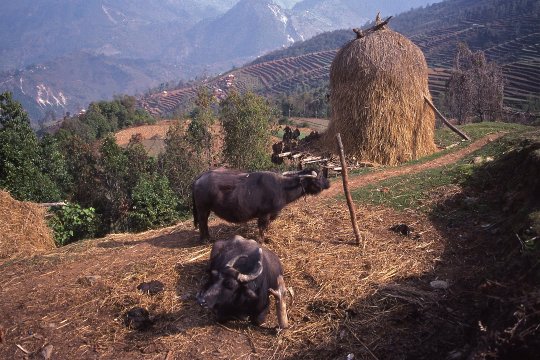 |
| 278. Most of the people who live around Ramja Thanti are farmers and grow crops to feed themselves. They also keep a few animals -- some for food, others to help with farm work |
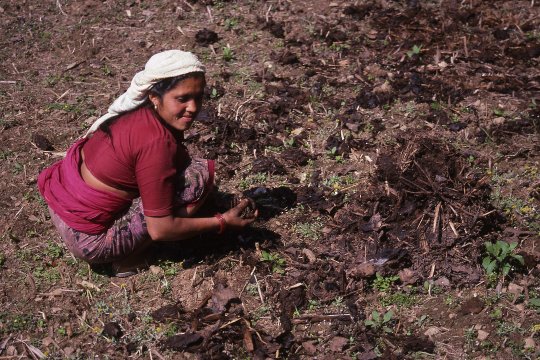 |
| 292. It is then carried to the fields, and spread around by hand. [Video Extract 02] |
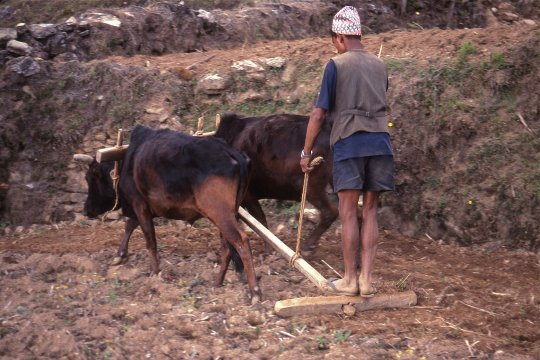 |
| 294. The field will then be harrowed, to smooth the surface prior to planting. |
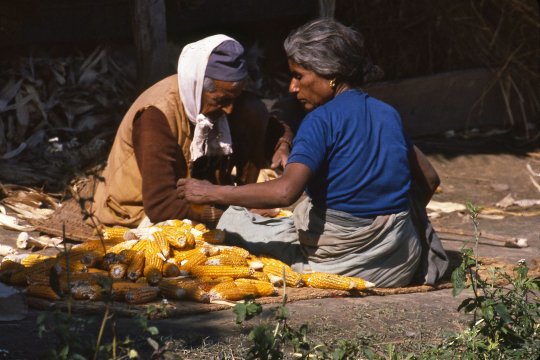 |
| 297. At harvest time each corn stalk is cut individually at ground level with a sickle and carried back to the house. Here the cobs are stripped off and the stalks set aside for use as fodder later. |
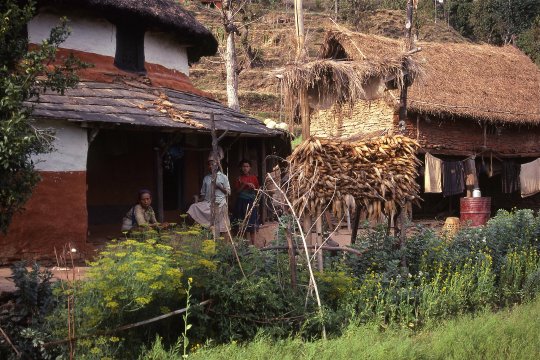 |
| 298. The corn cobs will be stored in above-ground stacks or under the eaves of the house. |
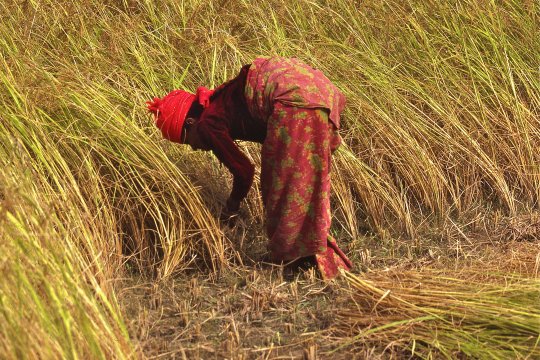 |
| 299. When rice crops are ready the whole stalk will again be harvested using a curved knife or a sickle. |
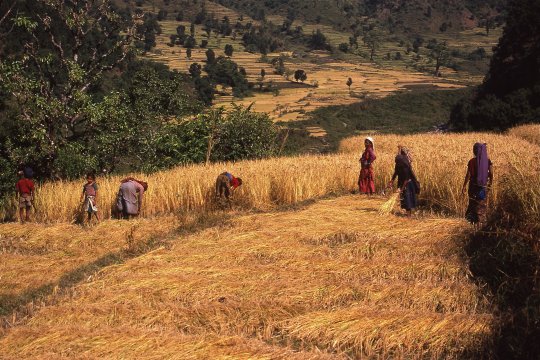 |
| 300. But it will then be left to dry in the field for two or three days, before it is bundled up and moved to a threshing floor nearby. |
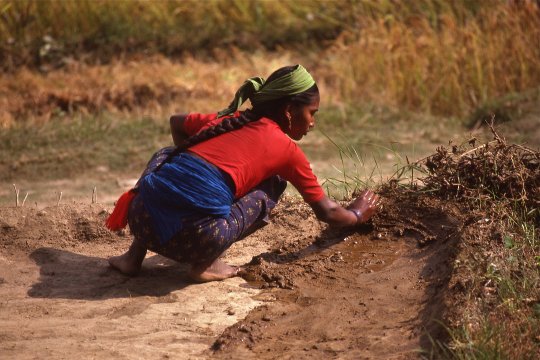 |
| 301. This will have been coated with mud to produce a smooth surface against which the sheaves will be beaten to loosen the grain. |
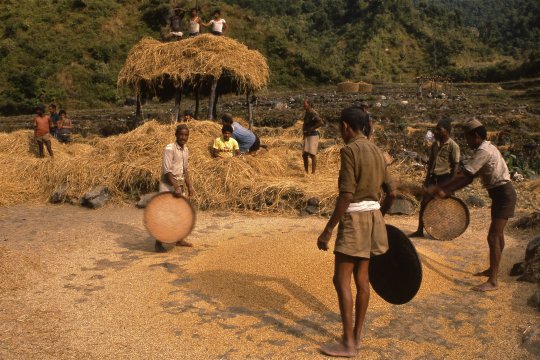 |
| 302. The detached grains will be swept up and either winnowed there and then or bagged and taken back to the house. |
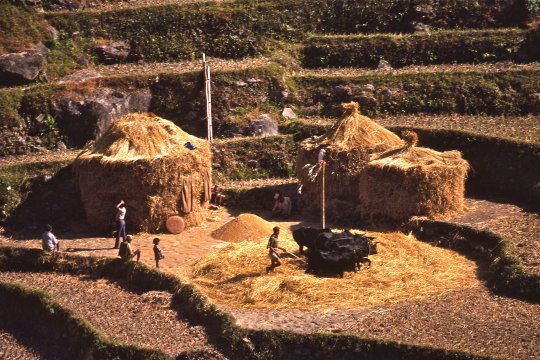 |
| 303. The straw, which is then crushed by oxen harnessed to a pole, will be used as fodder, and is stacked nearby. |
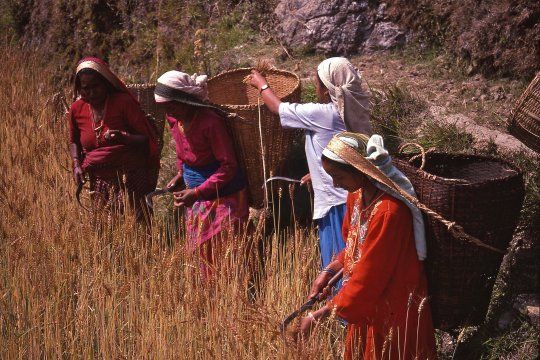 |
| 304. In the case of wheat, the head is cut from the stalk. It’s a task in which everyone in the family shares. [Video Extract 03] |
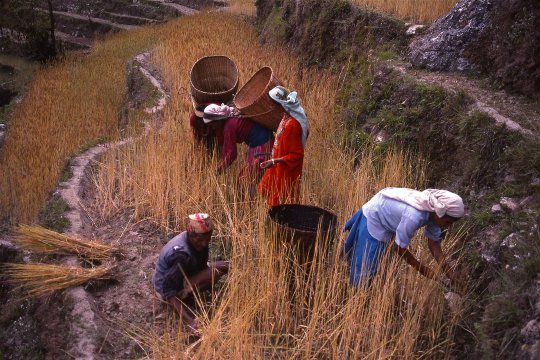 |
| 305.The straw that remains will be harvested also, and bundled up for use later as animal feed or bedding. |
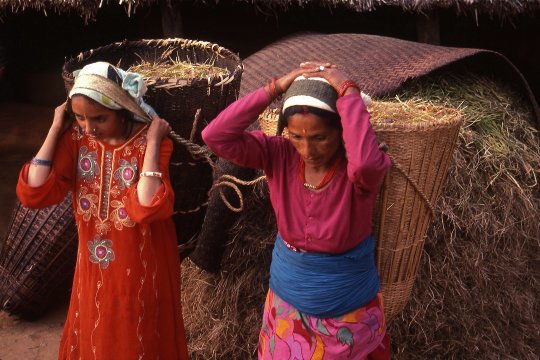 |
| 306. At the end of the day the wheat will be carried home for threshing |
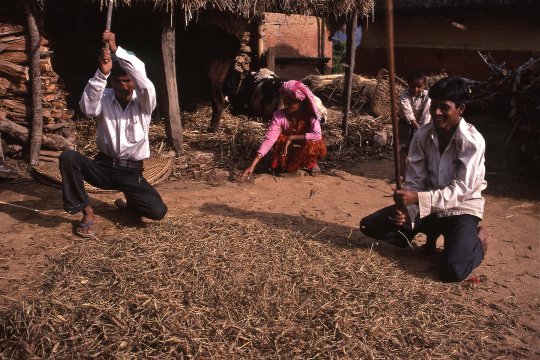 |
| 307. After drying it will be beaten with a stick (usually by men) to knock the grain from the husks. |
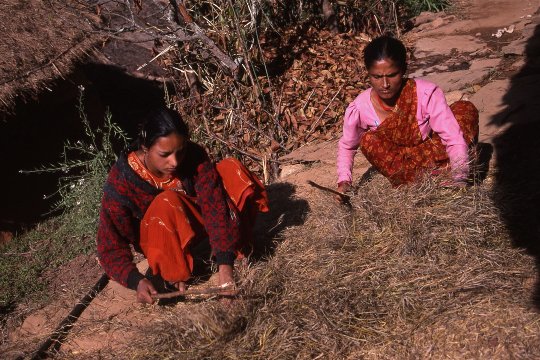 |
| 308. Mustard (shown here), millet and lentils are threshed in the same way. [Video Extract 04] |
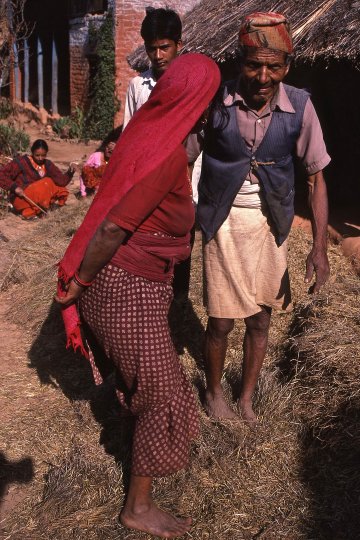 |
| 309. My friend’s parents helped with their feet. His mother was far from well that day, and greatly discomforted by giardia, but she insisted on doing her share of the work. |
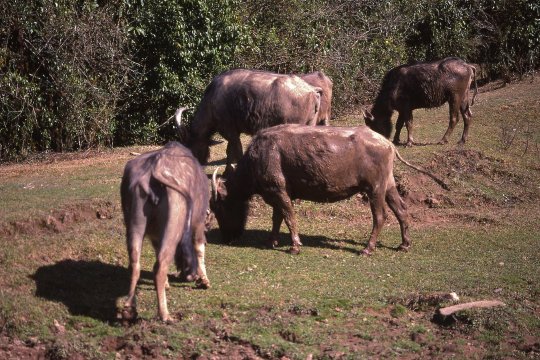 |
| 316. The higher slopes are not suited to cropping and are used for grazing towards the end of the cool season when farmers can no longer feed all their animals at home on last year’s fodder. |
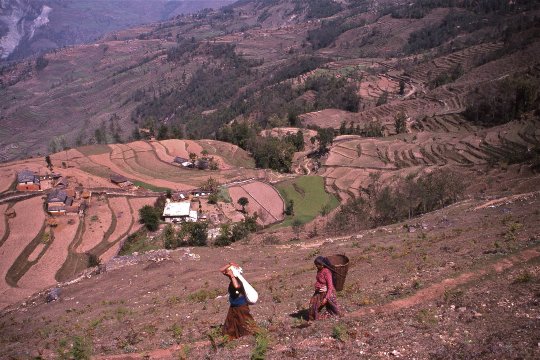 |
| 317. In areas of orthodox Hindu beliefs herds are dominated by old and sick animals, which are of no further use but still must be fed. Hillsides are overgrazed as a result. |
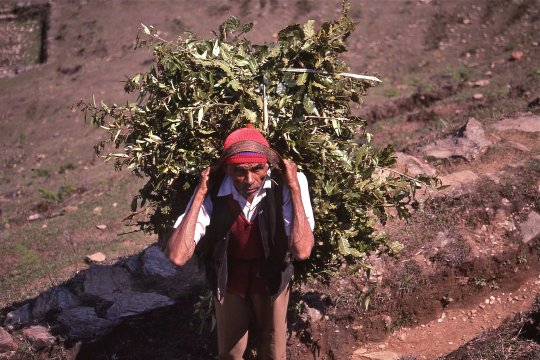 |
| 318. Most of the forest above is common land and people can collect as much firewood, timber and fodder as they wish, thereby increasing the danger of soil erosion. |
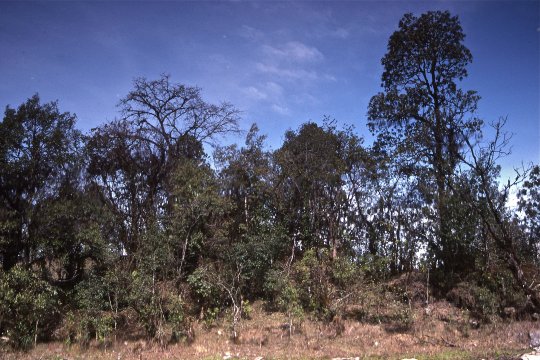 |
| 319. As a result much of the “forest” higher up has been reduced to scrub woodland and little vegetation is left to retain the soil on steep slopes. |
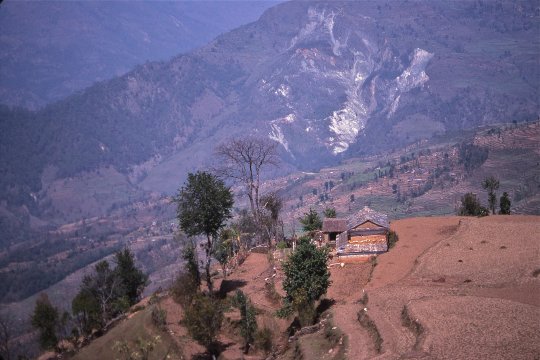 |
| 320. Even close to Ramja whole hillsides have been scarred by erosion and still more so by massive landslides. |

![]()
Text, photos and recordings
by John Tyman
Intended for Educational Use
Only.
Contact Dr. John Tyman at johntyman2@gmail.com
for more information regarding
licensing.
![]()
www.hillmanweb.com
Photo processing, Web page layout,
formatting and hosting by
William
Hillman ~ Brandon, Manitoba ~ Canada